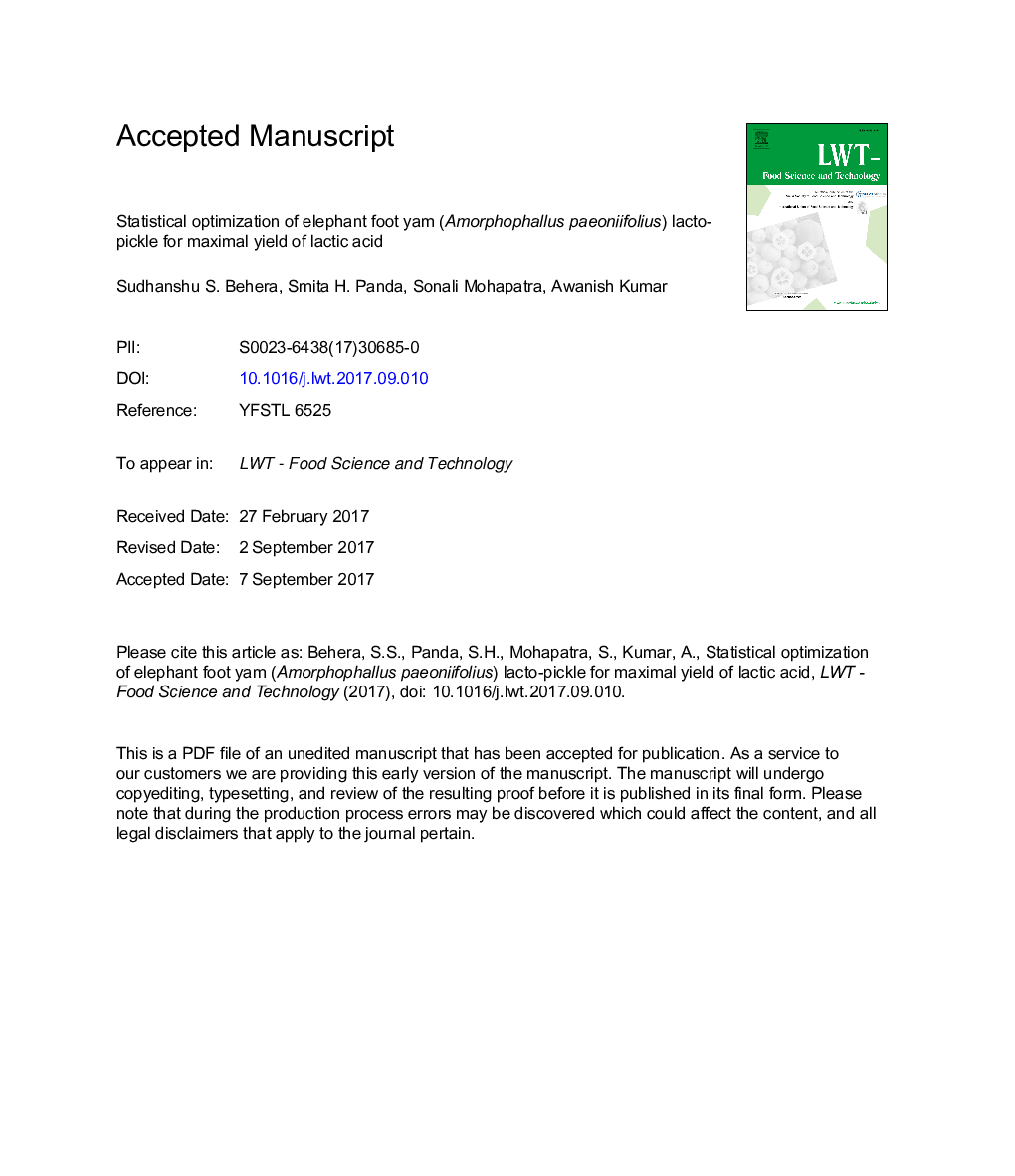| Article ID | Journal | Published Year | Pages | File Type |
|---|---|---|---|---|
| 8892134 | LWT - Food Science and Technology | 2018 | 36 Pages |
Abstract
The most common fermented foods are prepared using lacto-fermentation. In this study, we have investigated the production of “Lacto-pickle” using a plant Elephant Foot Yam (Amorphophallus paeoniifolius; Cultivar: IGAM-1) in presence of Lactobacillus plantarum (MTCC-1325). Response Surface Methodology was used to evaluate the effects of three optimum variables, i.e., salt concentration (8%, w/v), inoculum volume (10%, v/v), and incubation period (22 days) on lactic acid (LA; a natural preservative) production, using a full factorial Central Composite Design. Under optimized conditions, the predicted response for “LA production” (3.992Â g/kg) were found very close to the experimental response (3.873Â g/kg) providing the validity of the model. The treatment with 8-10% brine solution during LA fermentation was found to be the most acceptable organoleptically. EFY Lacto-pickle with 8 and 10% (w/v) brine solutions had a proximate composition of starch, 55-68Â g/kg; total sugar, 1.3-1.6Â g/kg; crude protein, 37.9-38.5Â g/kg; and fat, 22.5-23.0Â g/kg on fresh weight basis. The viability of the strains was determined during long-term storage (6 weeks) of EFY Lacto-pickle at room-temperature and viable cell counts were remain constant. The antagonistic activity of viable cells against food-borne pathogenic microorganism was also determined and shown to process inhibitory activities towards pathogens.
Related Topics
Life Sciences
Agricultural and Biological Sciences
Food Science
Authors
Sudhanshu S. Behera, Smita H. Panda, Sonali Mohapatra, Awanish Kumar,
